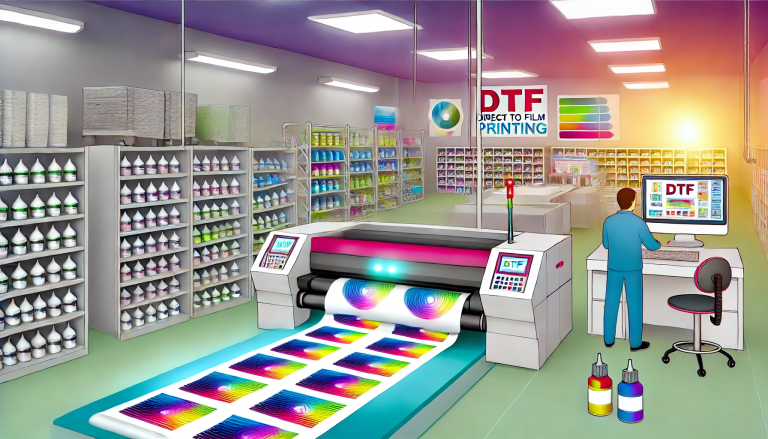“Understanding Ink Usage in Direct-to-Film (DTF) Printing: Does it Use Sublimation Ink?” -MAXDTF- PET DTF Film Supplier, PET Film roll for DTF Factory, Made in China
Summary:
This article delves into the type of ink used in Direct-to-Film (DTF) printing, a prevalent method in the textile industry. We will discuss whether DTF uses sublimation ink, the specific ink used in DTF, the science behind DTF inks, comparisons with other textile printing techniques, and future advancements in DTF ink technology.
Part 1: Does DTF Use Sublimation Ink?
Direct-to-Film (DTF) printing is recognized for its ability to produce vibrant, high-quality prints on various fabrics. A crucial component of this printing process is the ink used. But does DTF use sublimation ink?
The straightforward answer is no, DTF does not use sublimation ink. DTF printing involves a specialized type of ink specifically designed for this process, known as DTF ink.
Part 2: The Specific Ink Used in DTF Printing
DTF ink is a particular type of ink formulated for use in the DTF printing process. Unlike sublimation ink, which turns into gas under heat and bonds with polyester fibers, DTF ink is designed to adhere to an adhesive powder applied to the printed design.
DTF inks are usually available in the standard CMYK (Cyan, Magenta, Yellow, Key/Black) colors, allowing for a full spectrum of color printing. They are designed to produce highly detailed, vibrant prints that are long-lasting and resistant to fading.
Part 3: The Science Behind DTF Inks
The science behind DTF inks is quite fascinating. These inks are formulated to work in conjunction with an adhesive powder. The printing process involves first printing the design onto a film using DTF ink. This is followed by applying an adhesive powder onto the printed design.
The film is then heat-pressed onto the fabric, during which the adhesive powder melts and bonds the DTF ink to the fabric. This bond results in a durable and vibrant print that’s capable of withstanding numerous washes without significant fading or cracking.
Part 4: Comparing DTF with Other Textile Printing Techniques
When compared to other textile printing techniques, DTF stands out for its ability to print detailed, multi-colored designs on a wide variety of fabrics. Unlike sublimation printing, which works best on polyester, DTF can print on cotton, silk, and even blended fabrics.
DTF also differs significantly from techniques like screen printing, which uses thick, viscous inks and is better suited for simple, solid color designs. DTF allows for more complexity and color variation in designs.
Part 5: Future Advancements in DTF Ink Technology
The future holds exciting potential for advancements in DTF ink technology. Ongoing research and development in the textile industry aim to improve further the durability, vibrancy, and environmental sustainability of DTF inks.
One area of interest is the development of eco-friendly DTF inks that maintain high performance while reducing environmental impact. Another area of focus is creating inks that can adhere to even more types of fabrics, further broadening the versatility of DTF printing.
In conclusion, while DTF does not use sublimation ink, the specialized DTF inks used in this process offer unique benefits. They allow for the creation of vibrant, durable prints on a wide range of fabrics, making DTF a versatile and highly favored method in textile printing.




